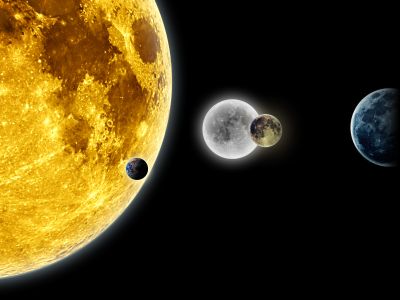Is it possible for the moon to go out of orbit and 'fall to Earth'?

Could the moon ever be pushed from orbit, like in'Moonfall'? | Live Science
https://www.livescience.com/moonfall-moon-knocked-from-orbit
The moon is a rocky celestial body with a very thin layer of gas, and the moon revolves in an orbit about 384,000 km away from the earth, and its mass is estimated to be more than about 7,000 tons. It is said that such a moon was formed in about 4.5 billion years, which is almost the same as the earth, and the widely accepted hypothesis about the formation of the moon is that a celestial body about the size of Mars collided with the early earth. It is the ' Giant Impact Theory (Giant Collision Theory) '. Another theory is that about five times as many celestial bodies as Mars collided with each other to form the Earth and the Moon at the same time, and that small celestial bodies repeatedly collided with each other to form the Moon.
Considering that there was a large-scale collision so that the moon was formed, and that there are a large number of craters formed by collisions of asteroids on the surface of the moon, 'a large-scale celestial impact occurred and the moon I feel that there is a possibility that 'is out of orbit'.

However, Paul Chodas, director of the Near-Earth Object Research Center (CNEOS) at NASA's
CNEOS identifies and tracks near- Earth objects such as asteroids and comets to determine if they pose a threat to the Earth or the Moon. There are about 28,000 near-Earth objects that CNEOS is tracking, but because there is an Earth with stronger gravity near the Moon, many near-Earth objects are pulled by the Earth instead of the Moon. And that.
The size of the colliding celestial body is also important for the celestial body to collide and change the orbit of the moon. 'The moon is big, so it will have to be a huge object that hits at high speed (to change its orbit),' said Chodas. To change the orbit of the moon, a celestial body about the size of the moon collides. I insist that I have to.
Fortunately, none of the known asteroids in our solar system are as large as the Moon. According to NASA, even the largest asteroids in our solar system weigh less than one-70th of the Moon and orbit the asteroid belt between Mars and Jupiter, about 180 million kilometers from Earth. thing. Also, rockets and other artificial objects that have lost control may crash on the moon, but these also have no possibility of shifting the orbit of the moon.
'So the next time you look up at the moon in the night sky, you can rest assured that the moon won't go anywhere right away,' Live Science said.

Related Posts:
in Science, Posted by log1h_ik







